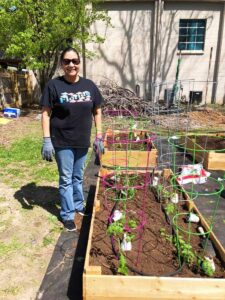Community of Practice is one of the most important, and seemingly forgotten, aspects of serving people. Whether the service is healthcare, commodities, education, or anything it’s impossible to make an impact without understanding the people one hopes to serve. The history of colonization, generational trauma, manufactured dependence, and other travesties took and continues to take away knowledge and actions from the minds most valuable – community members themselves.
Good Health and Wellness in Indian Country promotes Communities of Practice with frequent meetings where members may share their successes and struggles with one another. These peer-to-peer interactions generate ideas that can only come from people living in the communities they serve. In addition to facilitating communications, GHWIC resources are being used to encourage Community of Practice.
The GHWIC Community of practice is supported and facilitated by the Coordinating Center for GHWIC, housed in the Alaska Native Epidemiology Center within the Alaska Native Tribal Health Consortium. To encourage the growth of the Community of Practice, the coordinating center organized and sponsored the first Gathering conference on February, 2020 in Saint Paul Minnesota. The purpose of the Gathering was to kick-off the new round of GHWIC through joining together as a national network of recipients. Due to restrictions surrounding the COVID-19 pandemic, the second and third Gathering conferences were held online, but still held the purpose of bringing the network together to leverage its strengths and share knowledge to achieve its goals. It was not until the Year 4 the Gathering that the network was able to come together in person. The Year 4 Gathering was a smashing success with 182 individuals from 78 Tribes, Tribal Epicenters, and Urban Indian Organizations from all over the country to share best practices and novel approaches, spotlight solutions and successes, and draw inspiration from one another. CCGs primary goal was that all participants felt connected and saw themselves as part of a bigger whole.
Abigail Echo-Hawk, Director of Urban Indian Health Institute, shared how she has personally seen its benefits:
“The resources and the opportunity to take culturally specific messaging and programming to our communities has built forward a community led effort to address chronic disease within their own communities, their way – interventions for them and by them. It has really placed into the hands of the community the opportunity to make the changes that they know need to happen that are grounded in culture, tradition, and always centered in community voice. One of the areas of GHWIC that I think has been not talked about enough is the fact that our Native staff are given the opportunities to work in collaboration with community, it is not only built forward their professional development, but it is building strong leaders in Indian country. For my team that’s Tom Lawrence, a member of the Macaw Nation, who has taken on the GHWIC program, worked with communities across the country and has become a Tribal Leader and just the work that he has done in his communities. He is able to live authentically as a Native person building and being part of community and ensuring that our culturally based ways are the way that we are going to move towards healing. So the professional development for my team, while we’ve seen incredible impacts in the community, I’m also seeing that within the team itself.”
Abigail Echo-Hawk
Seeing GHWIC’s support allowing leadership and decision making coming back into the hands of Native peoples is a huge success. Sovereignty, not just with food but with policies, action planning, methods of communication and more, is what we continue to work towards. As Abigail described, community led efforts allowing members to work and live in ways created for them and by them will lead to this sovereignty and reclamation of culture.
To learn more about the Coordinating Center’s Community of Practice calls, and their adaptive restructure read more here!


Anchorage, AK
ccghwic@anthc.org
www.anthc.org



